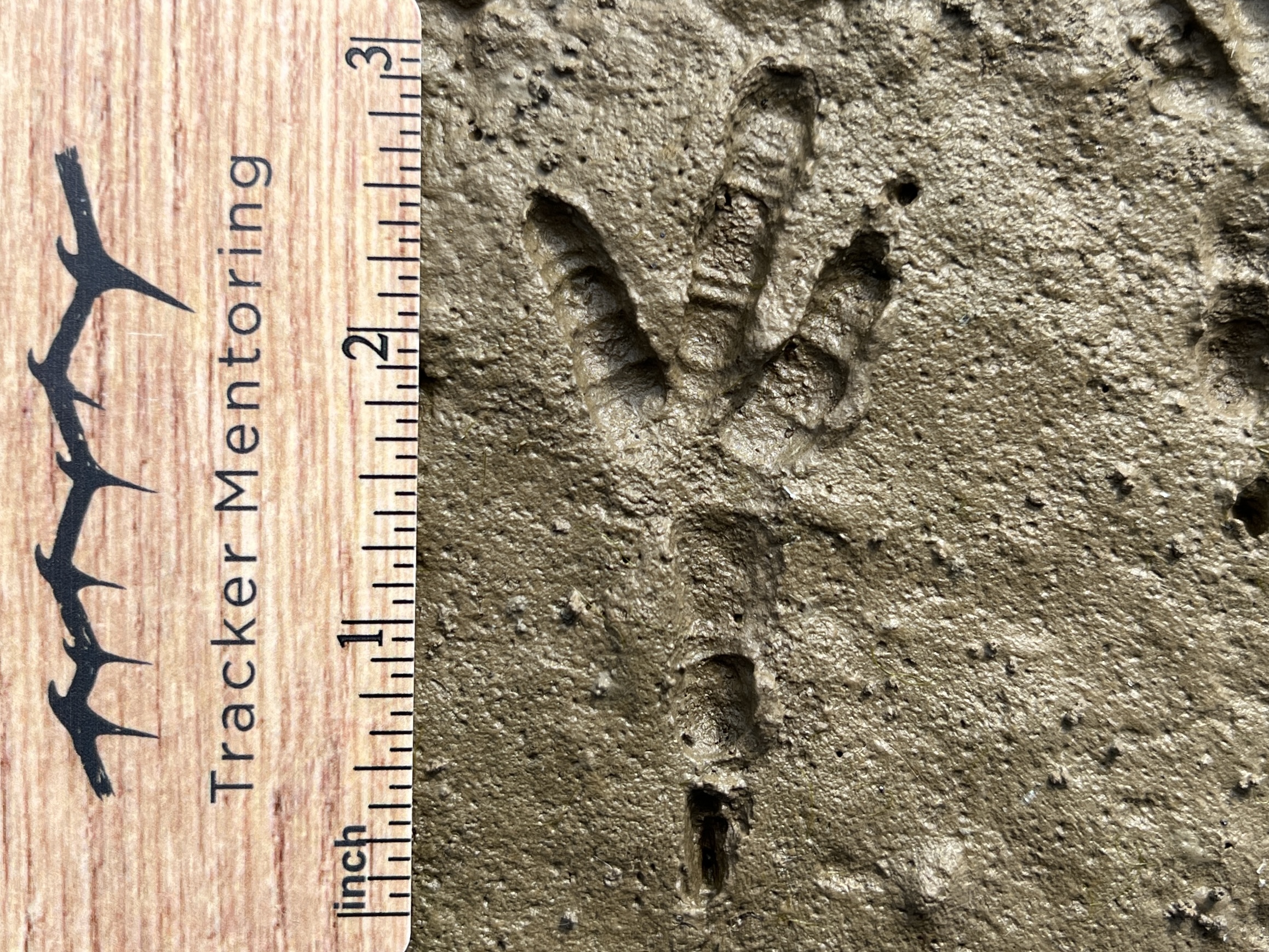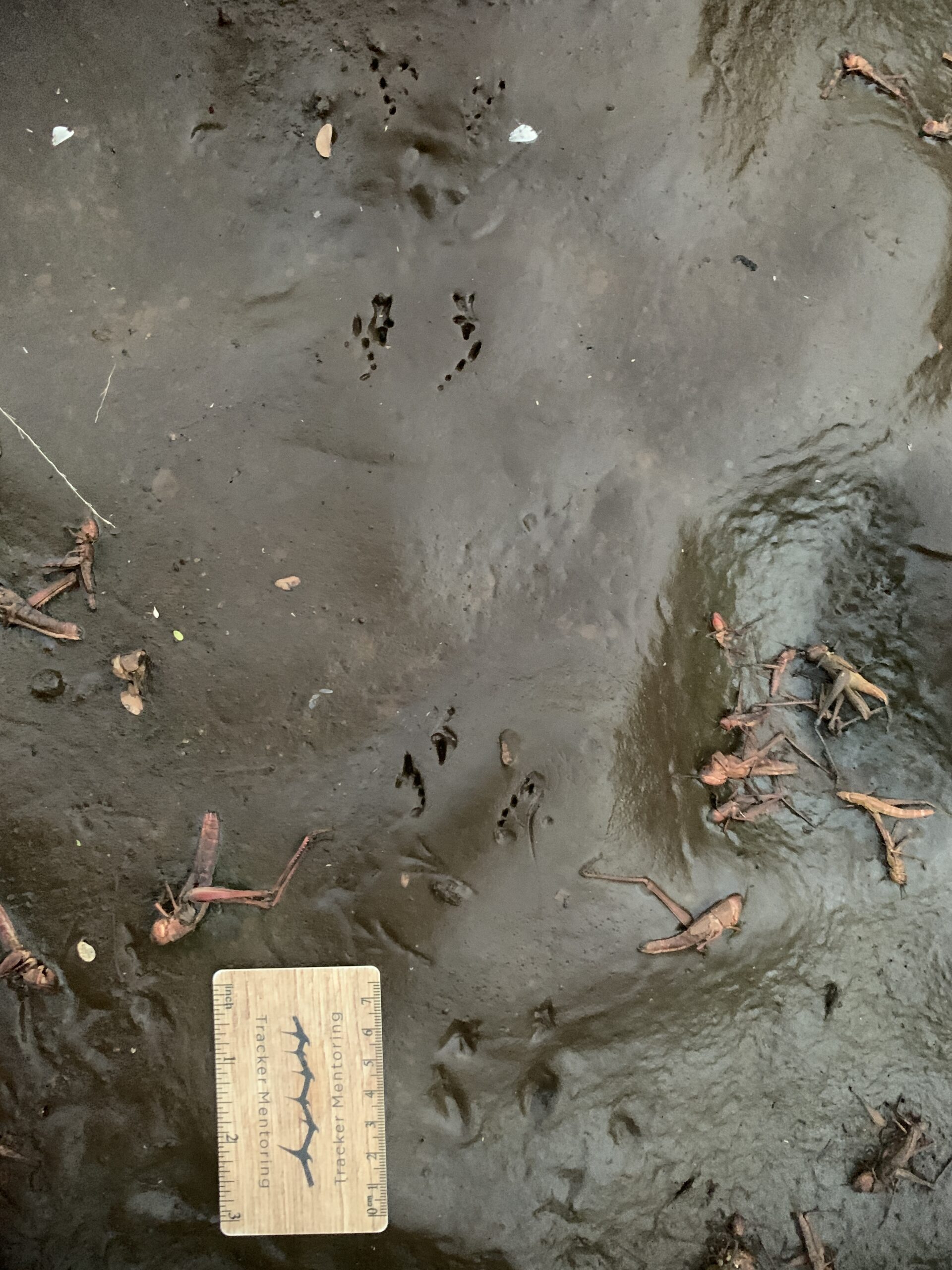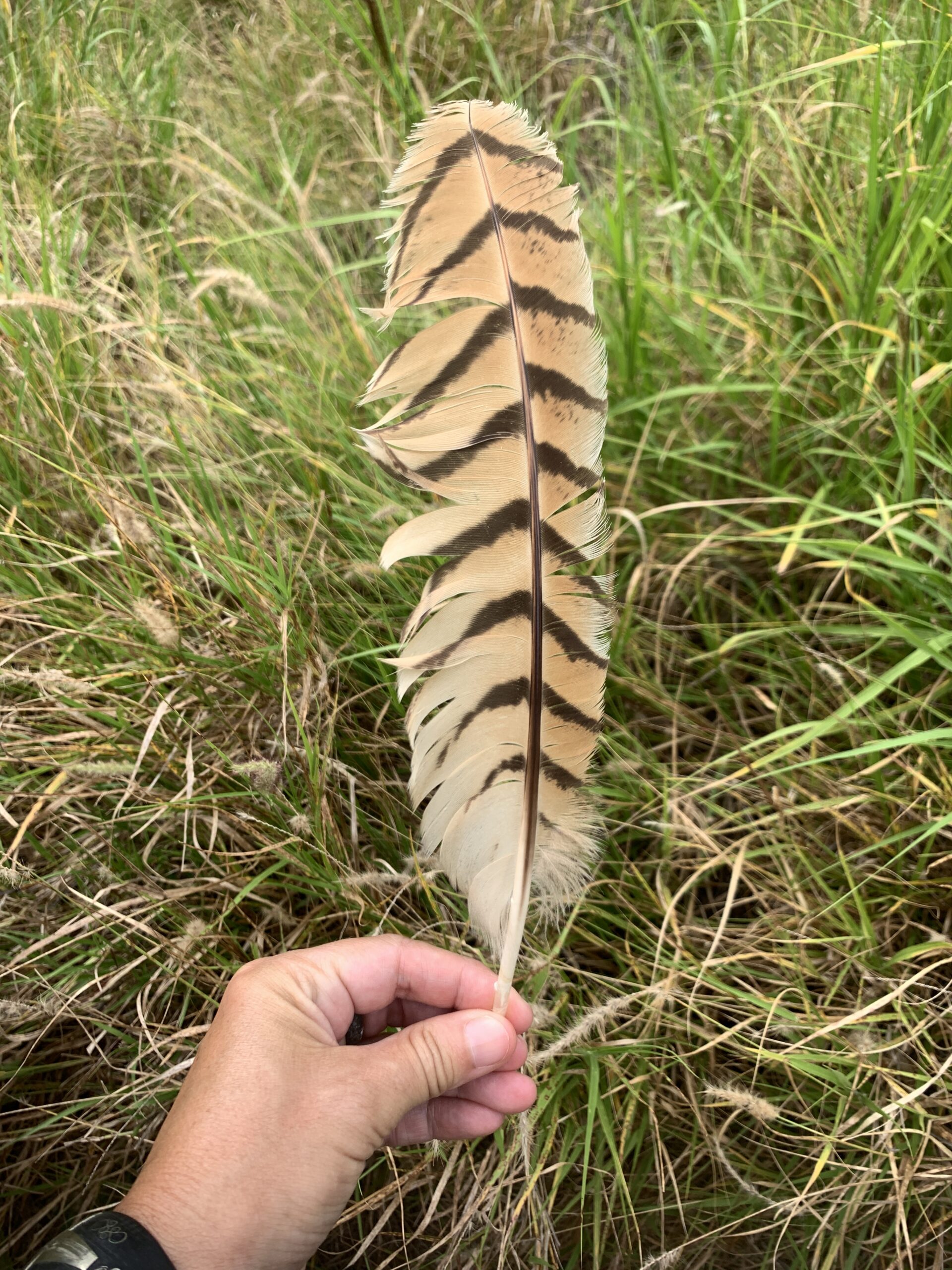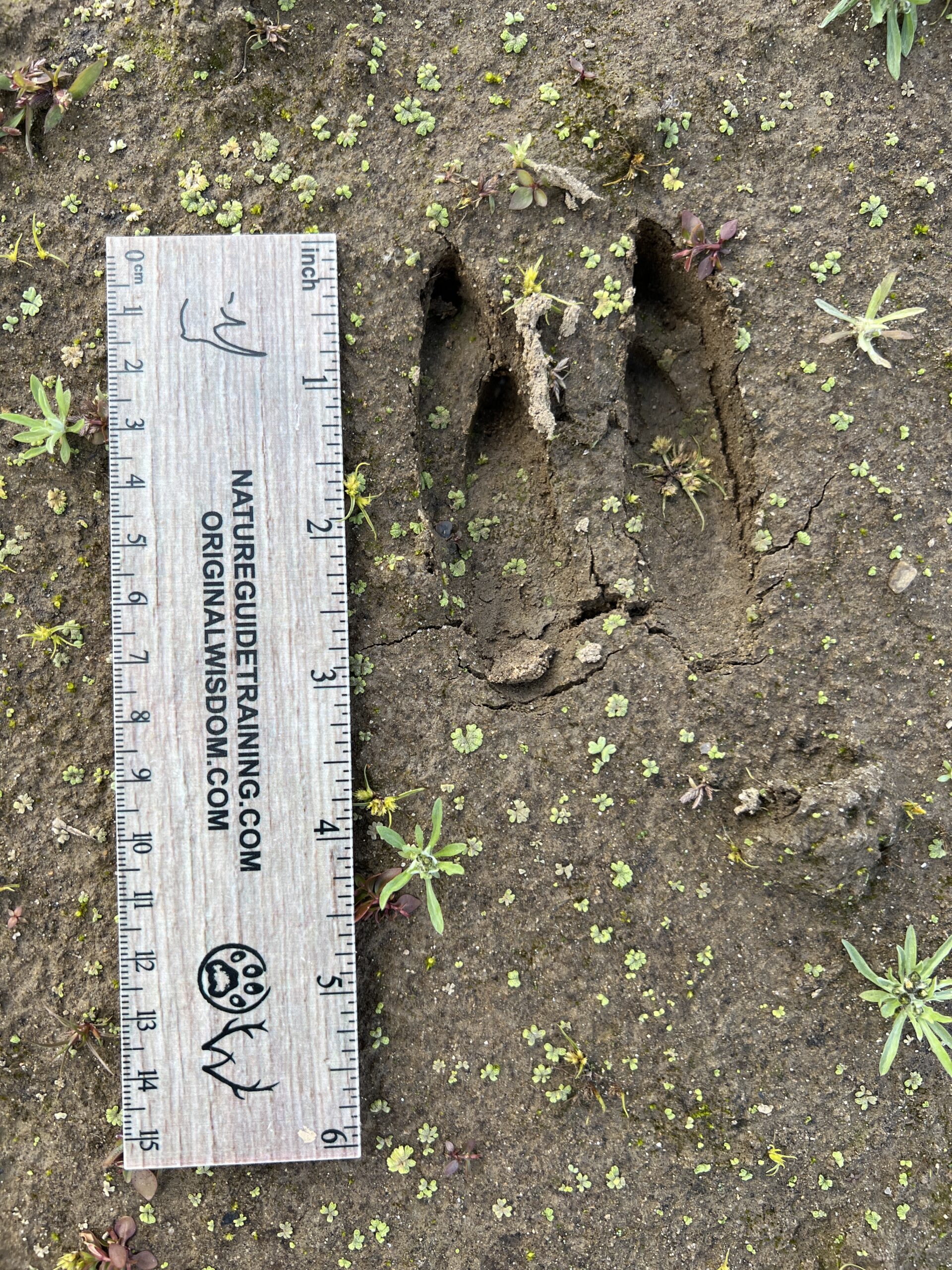NOTE: With all of the answers below, If you have an alternate opinion about any one, please share! We are all here to learn from each other. Even the most experienced trackers continue to expand their knowledge through their own and others’ experiences, so don’t hesitate to share additional information, observations, questions, or experience.
There are 6 questions in this quiz, some are from the northeastern USA, and some are from South Africa. More exact locations are given with the individual questions.
Question 1.
This photo comes from Shane Hawkins at the Allegheny mudflats, Southwestern New York, USA.
Who or what is it? Describe what you see.
Scroll down for the answer.

ANSWER:
Logan said, “I’m seeing a classic bird track, with bulbous toes and claw registrations. My short list is American Crow or Common Raven. The way I’ve traditionally differentiated them is mostly by looking at the pad of the hallux (toe 1). Ravens have a wider trapezoidal pad that narrows to the next pad ( looking like an ice cream cone). I’m not seeing that here, so I am going to say that this is an American Crow.”
And Melinda adds, “Track is just over 3-inches with the cutoff between crow and raven 3 5/8-inch. Also I believe only crows are found in this area, not ravens. Classic track with toes showing robust lobing and claws; T2 hugs T3 in classic Corvid fashion (making this a left foot).”
Question 2.
This photo comes from Kersey Lawrence in the Greater Kruger region of South Africa.
Who or what is it? Describe what you see.
Scroll down for the answer.

ANSWER:
Audrey was really working through their process, and said, “Some… type of frog….? Environment, weird holey holes that form foot shapes, big bound like patterns in between….?”
And Brian gave a more analytical answer, “Frog. I see evidence of a front (4 toes) and rear (5 toes) track (in groups of 4, going up the photo). Front tracks are inward facing, consistent with frogs.”
Question 3.
This photo comes from Shane Hawkins in Southwestern New York, USA.
Who or what is it? Describe what you see.
Scroll down for the answer.

ANSWER:
Ana Maria questioned, “Blue jay? They look like corvid tracks but very long and narrow.”
And Mark confirmed, “Blue jay. All three forward-facing toes crammed together.”
Question 4.
This photo comes from Kersey Lawrence in the Hoedspruit area of the Greater Kruger in South Africa.
Who or what is it? Describe what you see.
Scroll down for the answer.

ANSWER:
Liz hypothesized, “Raptor. Possibly an owl by the fuzzy outer edges.”
And Kimber nailed it, with, “Is that a (Pel’s) fishing owl? Very large feather, with furry surface characteristic of owls. So one of the bigger owl species…. Eagle owls look more mousy brown to me, with broader black stripes on the feathers. Fishing owl has this more yellow-brown color, with narrower black stripes. If so, super cool find!”
Question 5.
This photo comes from Kersey Lawrence in the Hoedspruit area of the Greater Kruger, South Africa.
Who or what is it? Describe what you see.
Scroll down for the answer.

ANSWER:
Tracy got part of the answer, with, “White tailed deer moving down. Indirect register-so seeing the back foot stepping near the front foot track rather than directly.”
(It is moving up the photo, and the smaller track is a hind track on top of a larger front track.)
And Sören from Sweden used his knowledge of hoofed species to arrive at the correct answer, “Double register of a deer species, quite pointy towards the front, negative space continuing towards the end of the track ruling out boar. White tail? (No idea which species live in the area).”
Question 6.
This photo comes from Shane Hawkins in Western New York, USA.
Who or what is it? What part of the body? Describe what you see.
Scroll down for the answer.

ANSWER:
Michael got this one (which tends to be a very confusing question, until you see it a couple of times)! He said, “Aardvark. The front prints are not so clear but the hind prints have three finger shaped toes registering with corresponding broad finger nail shaped claws showing. The inside toe or claw of the hind feet has also left a mark. The hind prints are just behind or maybe just over lapping the front prints. Relatively broad trail width. Heading up on the photo.”
Please go to OriginalWisdom.com and subscribe to our email list if you’d like to continue to receive these quizzes, along with our news, updates, and calendar of programs for North America and Africa.
You can also view old quizzes on the Original Wisdom website under the Resources tab, in the Tracking Gallery.
We are building a tracking database as a resource for learners. CONTACT US if you would like to submit photos from your area of the world for these quizzes – it does not have to be Africa or North America.
One hundred percent of donations made in Brandon’s name are set aside to help provide for a high school or college student to travel to South Africa to participate in an Original Wisdom program. The student must have a strong passion for photography and/or wildlife tracking and be a part of a program or class that is learning about and working towards conservation.